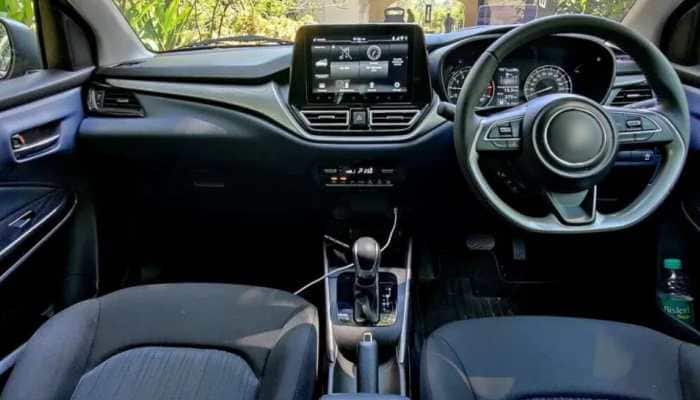Bihar Regiment: History, origin, battle honours, gallantry award winners
The Bihar Regimental Crest contains three-headed lions of Ashoka. The crest was selected by the then Officiating Commanding Officer 1st Bihar Battalion Captain M Habibullah Khan Khattak in 1941.
Trending Photos
) Image courtesy: Indianarmy.nic.in
Image courtesy: Indianarmy.nic.in The Bihar regiment has made a significant contribution in safeguarding India from its enemy, its acts of immense courage and valour have added glory in the pages of Indian army. The regiment fought bravely in the recent clash with China's Peoples Liberation Army at the Galwan Valley in Ladakh, losing 12 soldiers including the Commanding Officer of its 16th Battalion Colonel Bikkumalla Santosh Babu.
The regiment has several achievements and victories in the battlefield against its name and has been at the forefront of many successful military operations.
Here's a look at the history of Bihar regiment.
The Bihar Regiment was raised by the British East India Company as the ‘Bengal Native Infantry’. In fact, the British were so impressed with the valour and tenacity of the Bihari soldiers that in 1758 when Lord Robert Clive became the first British Governor of the Bengal Presidency, the 34th Sepoy Battalion was raised entirely with soldiers recruited from Bhojpur district of Bihar. The other areas from where the soldiers were primarily recruited included Shahabad and Munger districts of present-day Bihar.
These troops scored spectacular victories during Buxar, Karnatic and Maratha Wars. They even proved their worth overseas at Malaya, Sumatra and Egypt.
But the Bihari troops also showed their fearless attitude and strict principles by being the first to revolt against the introduction of greased cartridges and preferred being blown by the guns than lose their faith during India's First War of Independence (1857).
Fearing their war-waging capabilities and the damage they caused during the 1857 First War of Independence, the British disbanded all 18 Bihar battalions and all the recruitment from the state was stopped.
Babu Kunwar Singh and Birsa Munda are the two legendary figures of the independence struggle. While Babu Kunwar Singh was one of the heroes of 1857, Birsa Munda, from the Munda tribe of present-day Jharkhand, gave a tough time to the British.
Large-scale recruitment of soldiers from Bihar started once again during the Second World War and they joined the 19th Hyderabad Regiment. 1 Bihar Regiment was raised on September 15, 1941, and owes its origin to the 11/19 Hyderabad Regiment.
The Bihar Regimental Crest contains three-headed lions of Ashoka. The crest was selected by the then Officiating Commanding Officer 1st Bihar Battalion Captain M Habibullah Khan Khattak in 1941.
Battle Honours
The Battalion was awarded two 'Battle Honours' during World War II namely 'Haka' and 'Gangaw' and was also bestowed with the 'Theatre Honour' of Burma. 2 Bihar also fought with distinction in Malaya as part of the `ZIPPER FORCE' under Lieutenant Colonel (later Lieutenant General) Sant Singh.
The regiment also participated in the Indo-Pak Wars of 1965 and 1971 and accomplished the assigned tasks in a commendable manner. The 1st Battalion, Bihar Regiment took part in ‘Operation Vijay’ during the 1999 Kargil War against Pakistan. 1 Bihar recaptured Jubar Hill and Tharu from the Pakistanis and was honoured with Chief of the Army Staff Unit Citation, Battle Honour ‘Batalik’ and Theatre Honour ‘Kargil’.
Several battalions of Bihar Regiment have taken part in United Nation Peace Missions including 1 Bihar in Somalia (1993-1994). Troops of 10 Bihar, 5 Bihar and 14 Bihar been part of United Nation peacekeeping operations in Congo in 2004, 2009 and 2014 respectively.
Bihar Regiment also has four Rashtriya Rifles battalions (4RR, 24RR, 47RR, 63RR) which is among the highest number of such units among all regiments of the Indian Army.
One of the highly decorated regiments of the Indian Army, soldiers of Bihar Regiment have won the following awards till date (June 22, 2020):
Pre-Independence
(i) Distinguished Service Order (DSO ) - 7
(ii) Member of the Order of the British Empire (MBE) - 8
(iii) Military Cross (MC) - 5
(iv) Order of British India (OBI) - 6
(v) Military Medal (MM) - 9
Post Independence
(i) Ashoka Chakra (AC) - 7
(ii) Param Vishisht Seva Medal (PVSM) - 35
(iii) Maha Vir Chakra (MVC) - 9
(iv) Kirti Chakra (KC) - 21
(v) Ati Vishisht Seva Medal (AVSM ) - 49
(vi) Vir Chakra (VrC ) - 49
(vii) Shaurya Chakra (SC) - 70
(viii) Yudh Seva Medal (YSM) - 9
(ix) Sena Medal (SM)- 448
(x) Jivan Rakshak Padak - 7
(xi) Vishisht Seva Medal (VSM) - 42
(xii) Mention in Despatches - 45
10 Bihar's Lieutenant Colonel Harsh Uday Singh Gaur was awarded the Ashok Chakra in 1994 while Lieutenant Colonel Shanti Swaroop Rana (Posthumous) of 3 Bihar received it in 1997 for anti-terror operations in Baramulla and Kupwara districts respectively. 12 Bihar's Captain Gurjinder Singh Suri (Posthumous) was awarded the Maha Vir Chakra in 1999 for his gallant action in repulsing an attack by Pakistani soldiers and then chasing and eliminating several enemy soldiers. Major Sandeep Unnikrishnan (parent unit 7 BIHAR) was awarded the Ashoka Chakra (Posthumously) for his gallant action during the 26/11 attacks on Mumbai in November 2008 by Pakistani terrorists.
Other Vir Chakra awardees include Colonel M Ravi, 10 Bihar, 1971 East Pakistan (Later Bangladesh), Lieutenant Colonel PC. Sawhney, 10 Bihar, 1971 East Pakistan (Later Bangladesh), Major (Later Major General) DP Singh, 10 Bihar, 1971 East Pakistan (Later Bangladesh), Major Harpal Singh Grewal (Posthumous), 8 Bihar, 1971 East Pakistan (Later Bangladesh), Subedar Ghama Oraon, 1 Bihar, Sri Lanka, Colonel PK Sinha, 15 Bihar, Sri Lanka, Naik Shatrughan Singh, 1 Bihar, Batalik sector, Kargil War (1999) and Major (Later Colonel) KPR Hari, 1 Bihar, Batalik sector, Kargil War (1999).
Stay informed on all the latest news, real-time breaking news updates, and follow all the important headlines in india news and world News on Zee News.
Live Tv







)
)
)
)
)
)
)
)
)
)
